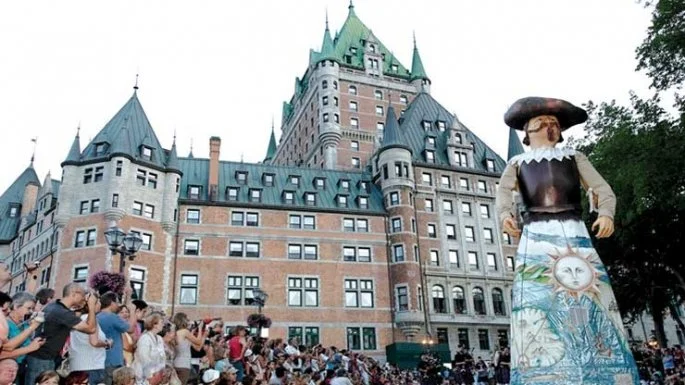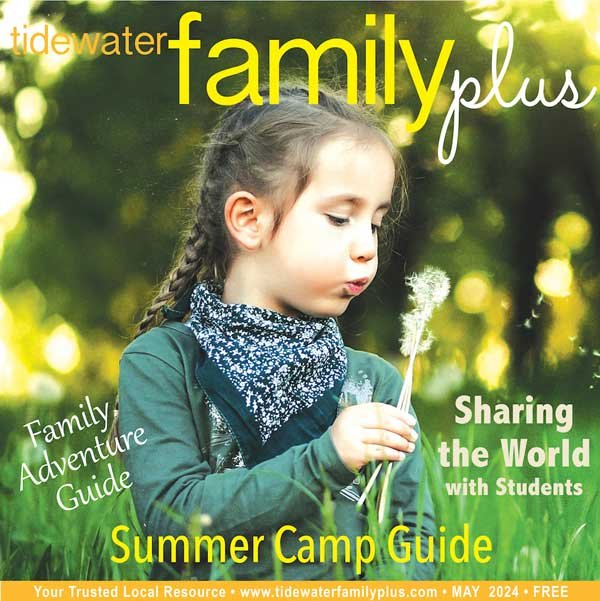Charming Quebec City
/© Xavier Dachez
“Here they come!” shouted Ross, our youngest son, and ran back to where my husband, Peter, and I stood in Quebec City’s centuries-old city center. A moment later a fife-and-drum band playing cheery colonial music rounded a corner, followed by a parade of people straight from the pages of history books, wearing costumes that looked as authentic as the cobblestones under our feet.
First the bourgeois townspeople strolled by. The women wore elegant, hooped dresses and carried lacy parasols to protect their delicate skin from the hot August sun. Beside them bewigged and befrocked gentlemen sporting tights and buckled shoes sauntered, arms linked to their lady friends. As befitted their station in life, these well-to-do men and women nodded gently as they passed the crowds, the men occasionally lifting a ruffled cuff in a discreet wave.
A livelier group followed on the heels of the gentry. Peasant women wearing aprons over nondescript dresses, their hair tucked under colorful scarves, skipped along, chased at times by the menfolk, some with bad teeth and unkempt hair, their knickers dirty around the knees. These fun-loving townspeople whooped and hollered, joining together now and then for a jig in the street, much to the delight of the watching crowd.
Ross waited as patiently as he could for the best part of the parade to come. “When will they get here?” he asked.
“Soon,” I answered. “The best part comes last.”
Moments later they finally came into view: the giants Ross had been waiting to see. Towering above us at sixteen feet tall, four of them ambled slowly along dressed in historic attire. Each giant we learned was a symbolic representation of early settlers in these parts: the colonial mother Marie-Victoire, the adventurer-explorer Capitaine Vaillant, and the children Emeline and Louis. Ross was both fascinated and a little afraid of these strange round-headed giants, who bobbed along the street silently as the crowd leaned back their heads to look.
Culture & History
Every summer Quebec City puts on Les Fêtes de la Nouvelle France, aka the New France Festival, a four-day romp back to the 18th-century, which takes place in the historic area, known as Old Quebec, and features music, dancing, magic shows, theatre troupes, and the best-tasting lamb sausage I have ever eaten in my life.
Peter, Ross, and I planned our visit to Quebec City to coincide with the festival, which we’d heard was fabulous for families. Quebec City and her big sister, Montreal, are the French-speaking province of Quebec’s most populous cities. We’d been to Montreal before and loved it, but we’d heard Quebec City was every bit as charming as Montreal and then some.
It’s true. This destination offers much more than the special event we were lucky enough to see. The City of Quebec promises visitors a full calendar of festivals, not to mention a cozy European ambience, oodles of culture and history, excellent skiing in the winter, hiking and water sports in the summer—the list goes on and on.
But first—back to the Festival of New France—and the lamb sausage. I smelled its spicy aroma as we walked through the Place de Paris market, an area of the festival where farmers from surrounding communities, all wearing historic costumes, sold specialty foods they’d prepared. The snacks ranged from chicken-on-a-stick to pancakes to corn on the cob, and of course the lamb sausage, plump moist morsels, perfectly spiced and served on sticks hot off the grill.
Peter, Ross, and I found a shady spot under a tent to savor our sausages, along with our beverages—frosty golden Canadian ale for Peter and me and lemonade for Ross. While we relaxed, the “innkeeper” approached, dressed in period clothing, complete with black teeth and whiskers. He growled at us in French and then, seeing our blank faces, switched over to English.
“How’re ya doin’?” he snarled. “Are ya getting’ enough to eat? How about another of my fine-tastin’ brews?”
After Peter assured him we had everything we needed, the innkeeper chatted with us a few moments before moving on to the next table. Ross suddenly looked at me and said, “He must not brush his teeth very much.” I decided not to tell him the innkeeper’s teeth were ugly because of special make up he used. Seeing the damage caused by not brushing your teeth is a good lesson for a little boy to learn.
Soon two musicians came along, one with an accordion, my personal favorite, the other a violin, and began playing dance music under the tent. A barmaid jumped up on a tabletop and kicked up her heels to the music, clutching her skirt in her hands and showing her petticoats underneath, while people nearby grabbed their beers before losing them to her pointy shoes. As the crowd stomped and whistled, Peter and I agreed this festival was one of the best we’d ever been to!
Dress-Up Party
What makes the New France Festival special is the way everyone gets involved. Festival-goers rent costumes and join in the celebration. These aren’t re-enactors or docents or historic interpreters; these men, women, and children are regular folks like you and me except they get dressed up once a year in 18th-century garb to become part of history for a few days.
We wandered into another area of the festival that proved convivial: the Louisiana Quarter where a band played Cajun music and gumbo cooked over hot fires. Ross tried out old-fashioned children’s games and play equipment, including a push-powered merry-go-round with ropes dangling down. Next to the Louisiana Quarter was a Native American camp with a drumming circle and tribe members representing the Huron people, who were among Quebec’s earliest residents.
Craftspeople—blacksmiths, woodworkers, and weavers—demonstrated their skills in another area of the festival, where we were fortunate to hear a chorus of children sing spirited French songs under a huge tree by the St. Lawrence River.
I was struck by Quebec City’s loveliness and how much it resembles European cities we’ve visited. It’s very clean and compact and easy to navigate on foot if you don’t mind climbing a few hills. The perfect place for stretching your legs or enjoying a midday picnic is the Plains of Abraham, a 250-acre urban park in the heart of the city, which was the setting for numerous battles between British and French troops in the 1700’s as each country vied for ownership of this strategic location.
The city’s most famous landmark is the very elegant and pricey Le Chateau Frontenac, a Fairmont property perched on the same promontory as most of Old Quebec above the banks of the St. Lawrence. We wandered through the chateau’s hallowed halls, oohing and ahhing at the elegant décor.
Fortunately, plenty of other accommodations are available both in Old Quebec and the surrounding area. In addition to chains, visitors can choose from among cozy boutique hotels, bed-and-breakfast accommodations, and a bit further out cabins and condominiums. We opted for the latter and stayed in the vicinity of Mont-St.-Anne, about thirty minutes east of Quebec City. In winter the Mont-St.-Anne area is a Mecca for ski enthusiasts, but in summer it’s a peaceful retreat for families, offering hiking, swimming, and family activities.
One sunny day we explored Canyon Sainte-Anne, which offers views of a powerful waterfall from three suspension bridges, one of which crosses the chasm about 200 feet above the rushing water. The hike through the canyon loops down and then back up, its numerous stairs causing us to huff and puff and stop frequently to rest. Families with young children may want to think twice before descending to its lowest point. Henry David Thoreau visited Canyon Sainte-Anne and described it as “a most wild and rugged and stupendous chasm.” Ross was delighted to see rock climbers rappelling along sheer rock faces while we were there.
Whether exploring nature or attending Les Fêtes de la Nouvelle France, summers in Quebec City are enchanting. It’s a city that will haunt my memories with its beauty, special charm—and its unforgettable lamb sausage. Vive la Quebec!
Visit www.nouvellefrance.qc.ca for up-to-date information on the New France Festival.
For additional information, contact www.quebecregion.com.













